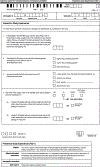Preventive Misconception and Risk Behaviors in a Multinational HIV Prevention Trial
- PMID: 31002583
- PMCID: PMC6612263
- DOI: 10.1080/23294515.2019.1593257
Preventive Misconception and Risk Behaviors in a Multinational HIV Prevention Trial
Abstract
Background: Some HIV prevention research participants may hold a "preventive misconception" (PM), an overestimate of the probability or level of personal protection afforded by trial participation. However, these reports typically rely upon small, retrospective qualitative assessments that did not use a standardized approach.
Methods: We administered a measure of PM called PREMIS, during Microbicide Trials Network 020-A Study to Prevent Infection with a Ring for Extended Use, a large, multicenter, placebo-controlled, phase III trial evaluating the safety and efficacy of a dapivirine vaginal ring among women at risk for HIV infection in Malawi, South Africa, Uganda, and Zimbabwe. The maximum follow-up period was 2.6 years.
Results: One thousand two hundred sixty-one respondents completed PREMIS at their month 3 visit (M3); 2085 at their month 12 visit (M12); and 1010 at both visits. Most participants expressed high expectations of personal benefit (EPB) and that at least one of the rings used in the trial would reduce the risk of getting HIV (expectation of maximum aggregate benefit or EMAB). There was a moderate positive correlation between EPB and EMAB at M3 (r = .43, 95% CI: .37, .47) and M12 (r = .44, 95% CI: .40, .48). However, there was variability among sites in the strength of the relationship. There was no relationship between either expectation variable and condom use, adherence, or HIV infection.
Conclusions: A majority of trial participants expressed some belief that their risk of HIV infection would be reduced by using a vaginal ring, which may signal PM. However, such beliefs were not associated with adherence, condom use, or subsequent HIV infection, and there was variability across sites. Further work is needed to understand these findings.
Keywords: HIV prevention research; Preventive misconception; attitudes; ethics; informed consent.
Conflict of interest statement
Figures
Similar articles
-
Safety, uptake, and use of a dapivirine vaginal ring for HIV-1 prevention in African women (HOPE): an open-label, extension study.Lancet HIV. 2021 Feb;8(2):e87-e95. doi: 10.1016/S2352-3018(20)30304-0. Lancet HIV. 2021. PMID: 33539762 Free PMC article. Clinical Trial.
-
Vaginal Ring Use in a Phase 3 Microbicide Trial: A Comparison of Objective Measures and Self-reports of Non-adherence in ASPIRE.AIDS Behav. 2019 Feb;23(2):504-512. doi: 10.1007/s10461-018-2261-8. AIDS Behav. 2019. PMID: 30218318 Free PMC article. Clinical Trial.
-
Safety, adherence, and HIV-1 seroconversion among women using the dapivirine vaginal ring (DREAM): an open-label, extension study.Lancet HIV. 2021 Feb;8(2):e77-e86. doi: 10.1016/S2352-3018(20)30300-3. Lancet HIV. 2021. PMID: 33539761 Clinical Trial.
-
[Current status of the female condom in Africa].Sante. 1997 Nov-Dec;7(6):405-15. Sante. 1997. PMID: 9503499 Review. French.
-
Development of dapivirine vaginal ring for HIV prevention.Antiviral Res. 2013 Dec;100 Suppl:S3-8. doi: 10.1016/j.antiviral.2013.09.025. Epub 2013 Nov 1. Antiviral Res. 2013. PMID: 24188702 Review.
Cited by
-
Willingness to participate in COVID-19 vaccine trials; a survey among a population of healthcare workers in Uganda.PLoS One. 2021 May 27;16(5):e0251992. doi: 10.1371/journal.pone.0251992. eCollection 2021. PLoS One. 2021. PMID: 34043693 Free PMC article.
-
Expectations of preventative benefits and risk behaviors in a randomized trial evaluating oral HIV preexposure prophylaxis candidates.AIDS Care. 2024 Aug;36(8):1172-1178. doi: 10.1080/09540121.2024.2332446. Epub 2024 Apr 12. AIDS Care. 2024. PMID: 38606559 Free PMC article. Clinical Trial.
References
Publication types
MeSH terms
Substances
Grants and funding
LinkOut - more resources
Full Text Sources
Medical



